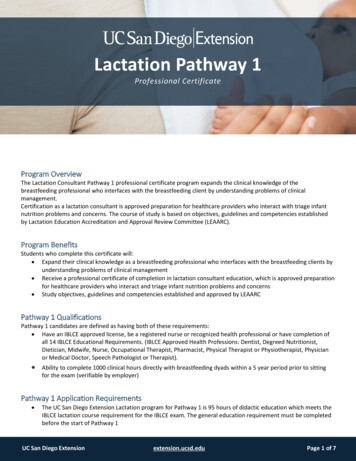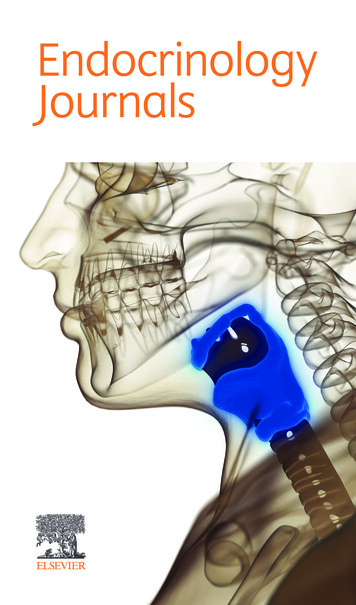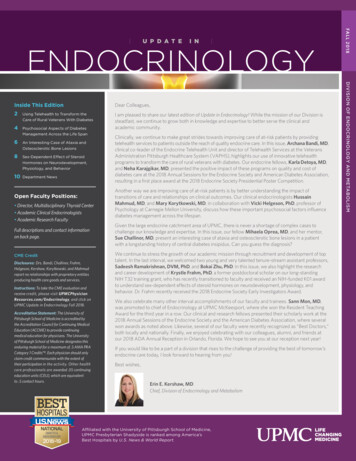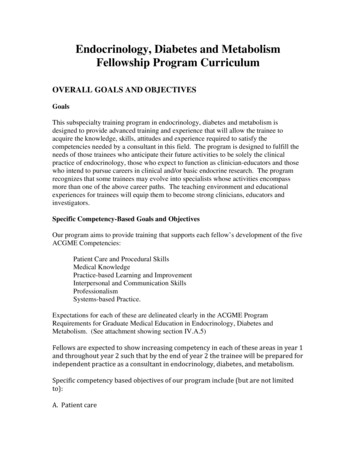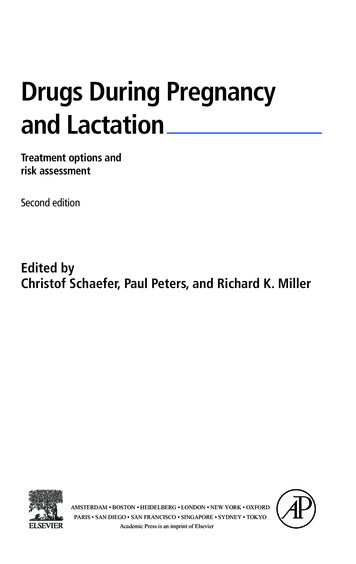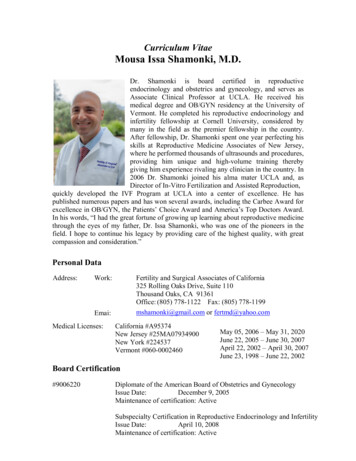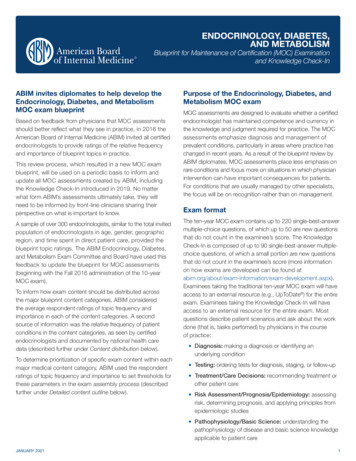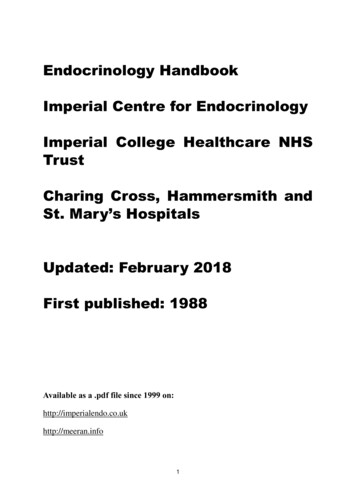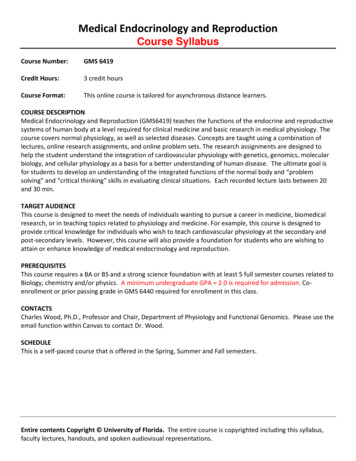
Transcription
Adopted from Senger LactationEndocrinology of Mammary Growth andMilk SynthesisAVS 172Amin AhmadzadehDepartment of Animal and Veterinary Scince1
Adopted from Senger The Mammary Gland Exocrine gland; common to all mammals Function: nourish the neonate- Food source: fat, protein, sugar (CHO),vitamins, minerals, water- Protection: immunoglobulins2
The Mammary Gland Loosely considered part of the reproductive system:Serves a “reproductive function”; nourishmentofthe neonate survival of species. Relies on same endocrine (hormonal) support fordevelopment and function.Example: gonadal steroids, prolactin, etc.The Mammary GlandSecretory Tissues: Glandular; secreting tissue Parenchyma– Alveoli; secreting epithelial cells– Duct system; lined by epithelial cells– Lobules & lobes; clusters of alveolar tissuesupported by connective tissue3
The Mammary GlandAlveolus:– basic secretory unit; lined by epithelial cellswhich synthesize and/or secrete: lipid protein lactose – minerals & vitamins - Ca, P, K; Vits. A, B, C, D water4
Milk Synthesis Milk synthesis is dependent on:––– supply of– endocrine support for lactogenesis– milking No. secreting cells is dependent on:– genetics– endocrine support for mammogenesis– nutrition– disease (mastitis)5
Blood ComponentsBlood Flow (cattle)Example:What volume of blood would a 1400 lb. Holsteinpump per day?1400 lb. Cow .9 liters/ heart strokeVolume/day .9 x 70 strokes/min 63 liters/min63 liters/min x 1440 min/day 90,720 liters/day 22,600 gal/dayBlood ComponentsBlood Flow (cattle) Volume of blood/ volume of milk synthesized (this is an approximation; actual ratio isaffected by stage of lactation, efficiency, etc.)6
Growth hormone and prolactinSteroid Hormones and Mammogenesis Estrogens:– Progesterone:– Corticoids:–7
Steroid Hormones and Mammogenesis Estrogens (E2) (follicle, placenta)1) stimulate2)release3) synergize with progesterone & prolactin tostimulate and duct growthSteroid Hormones and Mammogenesis Progesterone (P4) (corpus luteum, placenta)1) stimulates2) retards synthesis of enzymes (a-lactalbumin)necessary for lactogenesis in the prepartummammary gland8
Lactogenesis; Cortisol Cortisol:( from adrenal cortex)synthesis stimulated by maternal, fetal ACTH(dexamethasone is synthetic cort.)Action:1) essential to (Initiation andmaintenance of lactation)2) increase metabolism andProtein synthesis3) cortisol potentiates action of PRLMammogenesis(Mammary Growth and Development) Placental E2 luteal P4 – duct development– development– suppression of milk synthesis(P4 suppressesα-lactalbumin; lactose synthesis9
Mammogenesis(Mammary Growth and Development) Action of cortisol PRL:– increase PRL receptor synthesis– increase– increase mRNA– increase protein transcription/translation– increase /lactosesynthesis cortisol is permissive to action of PRLEndocrine Glands SupportingMammary FunctionOxytocinPosterior pituitary (protein hormones):9Synthesized in the hypothalmus9Ttransferred to post. pit.Action:9Secreted into blood 9Contraction of myoepithelial, smooth muscle10
Endocrine Glands SupportingMammary Function Prolactin,(PRL):–Action: Mammary growth Increases Initiation and maintenance of lactation11
Endocrine Glands SupportingMammary Function GH (STH, BST):– Anterior PituitaryAction: Increases Increases protein synthesis increases to mammarygland GH Increases increases blood glucose12
3 Loosely considered part of the reproductive system: Serves a “reproductive function”; nourishment of the neonate survival of species. Relies on same endocrine (hormonal) support for development
